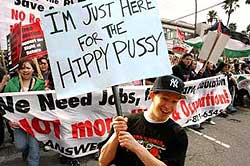...and the Gilded Age here in America, for that matter.
Anti-capitalistic versions of working conditions during the Industrial Revolution have been grossly exaggerated. For a clearer view of the actual conditions that existed at that time, several excellent works are available. One especially good source is Capitalism and the Historians, edited and with an Introduction by Friedrich von Hayek. This book includes a supplemental report produced during that period, a report that factually refutes most of the commonly taught exaggerations.
The fact is that the Industrial Revolution, which occurred in England roughly during the period 1760 to 1840, brought about the greatest improvement in the well‑being of man since the Agrarian Revolution. Prior to the Industrial Revolution, the Black Death, scurvy, rickets, and other diseases regularly wiped out large segments of the populations of Europe. Farming was more often than not barely above subsistence level. For the average person, life was day‑to‑day misery.
Industrialization lifted the living standards of the masses to a level never before dreamed of. One may properly say that it lifted them to a level that, for the first time, made the average worker conscious enough of better living conditions to complain about long hours, low wages and bad working conditions. When people are struggling just to stay alive from one day to the next, as they were in subsistence farming, such thoughts do not occur to them. (Eric Hoffer referred to the former as "the working poor.")
Before the Industrial Revolution, most people knew no other life but work, and their work was almost always under "inhumane" conditions in the fields. In point of fact, it was the Industrial Revolution that changed all this. Industrialists did not roam the countryside with shotguns, rounding up workers for their factories. On the contrary, as word of the new opportunities spread, people invaded the cities by the thousands, aggressively competing for the "inhumane" jobs.
Of course wages were low by today's standards. Of course hours were long by today's standards. Of course conditions were bad by today's standards. But that misses the whole point. It was not today's standards that the eighteenth‑century laborer used as a measuring stick. What caused him to migrate to the cities to seek employment in the so‑called sweatshops were the filth, sickness, and inhumane conditions of subsistence farming that he left behind.
The conditions in the factories, by comparison, were like the Promised Land to him. Never before had he lived so well. People do not voluntarily leave one job for another if the new job offers lower pay, longer hours and inferior working conditions. The bottom line is that people gladly left their bad rural situations for the vastly improved living conditions made possible by the Industrial Revolution.
Anti-capitalistic versions of working conditions during the Industrial Revolution have been grossly exaggerated. For a clearer view of the actual conditions that existed at that time, several excellent works are available. One especially good source is Capitalism and the Historians, edited and with an Introduction by Friedrich von Hayek. This book includes a supplemental report produced during that period, a report that factually refutes most of the commonly taught exaggerations.
The fact is that the Industrial Revolution, which occurred in England roughly during the period 1760 to 1840, brought about the greatest improvement in the well‑being of man since the Agrarian Revolution. Prior to the Industrial Revolution, the Black Death, scurvy, rickets, and other diseases regularly wiped out large segments of the populations of Europe. Farming was more often than not barely above subsistence level. For the average person, life was day‑to‑day misery.
Industrialization lifted the living standards of the masses to a level never before dreamed of. One may properly say that it lifted them to a level that, for the first time, made the average worker conscious enough of better living conditions to complain about long hours, low wages and bad working conditions. When people are struggling just to stay alive from one day to the next, as they were in subsistence farming, such thoughts do not occur to them. (Eric Hoffer referred to the former as "the working poor.")
Before the Industrial Revolution, most people knew no other life but work, and their work was almost always under "inhumane" conditions in the fields. In point of fact, it was the Industrial Revolution that changed all this. Industrialists did not roam the countryside with shotguns, rounding up workers for their factories. On the contrary, as word of the new opportunities spread, people invaded the cities by the thousands, aggressively competing for the "inhumane" jobs.
Of course wages were low by today's standards. Of course hours were long by today's standards. Of course conditions were bad by today's standards. But that misses the whole point. It was not today's standards that the eighteenth‑century laborer used as a measuring stick. What caused him to migrate to the cities to seek employment in the so‑called sweatshops were the filth, sickness, and inhumane conditions of subsistence farming that he left behind.
The conditions in the factories, by comparison, were like the Promised Land to him. Never before had he lived so well. People do not voluntarily leave one job for another if the new job offers lower pay, longer hours and inferior working conditions. The bottom line is that people gladly left their bad rural situations for the vastly improved living conditions made possible by the Industrial Revolution.











No comments:
Post a Comment